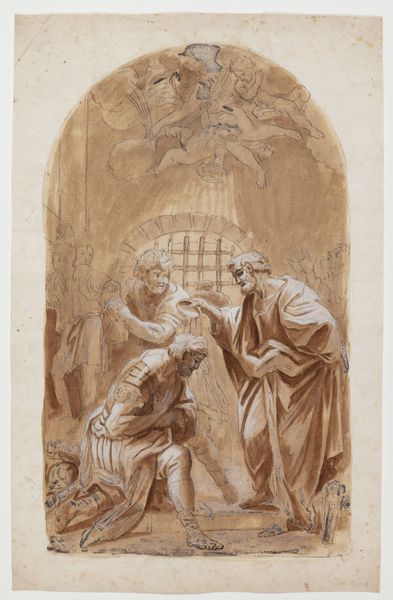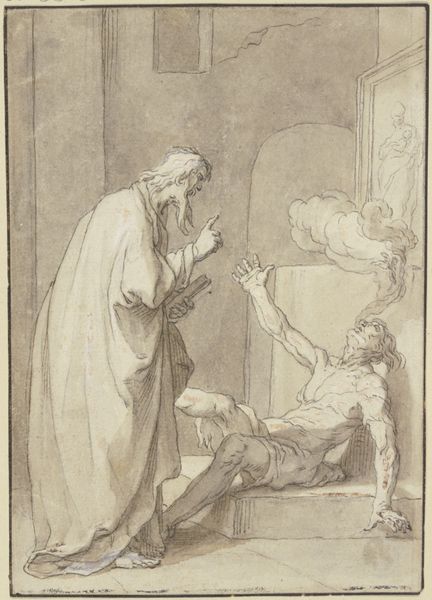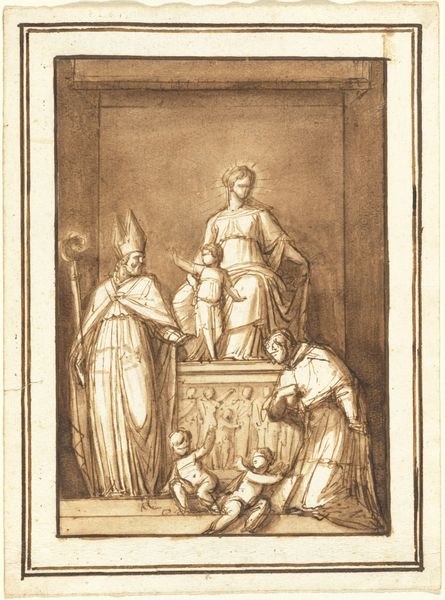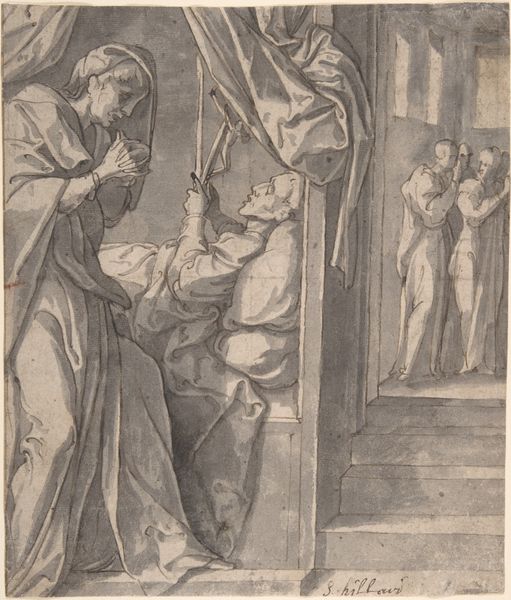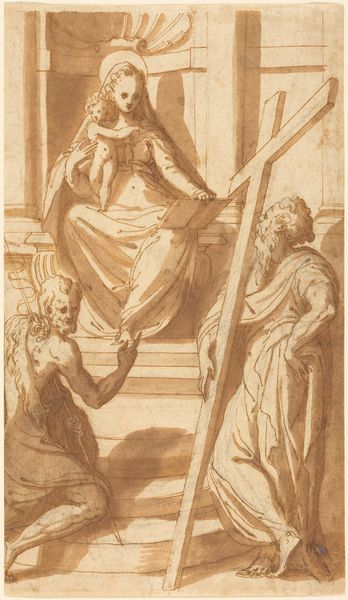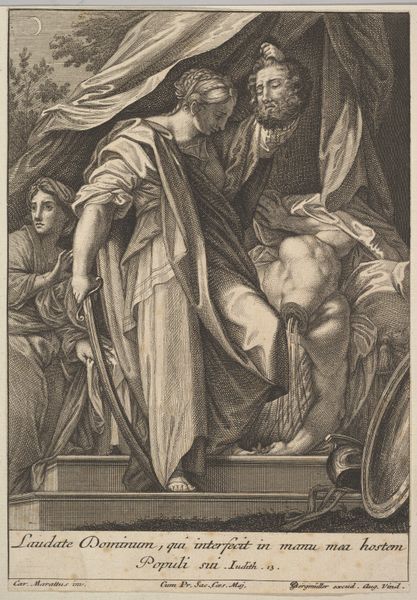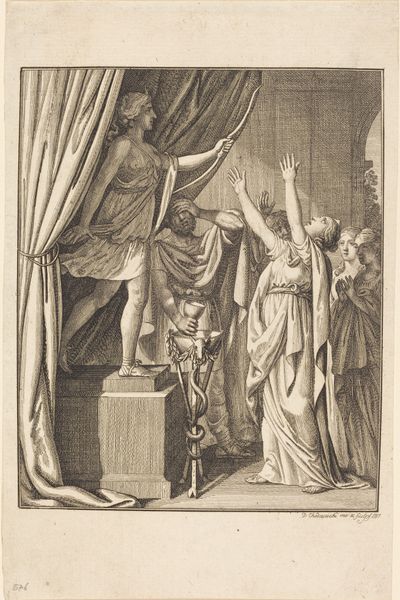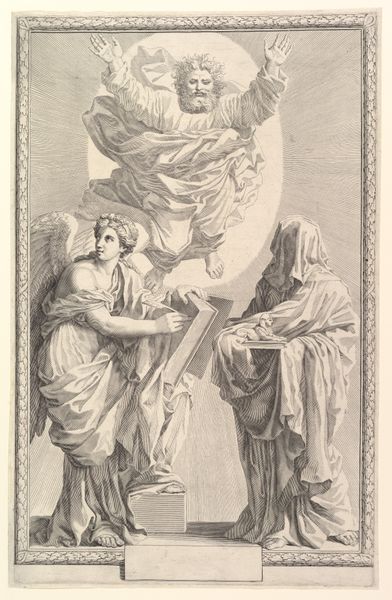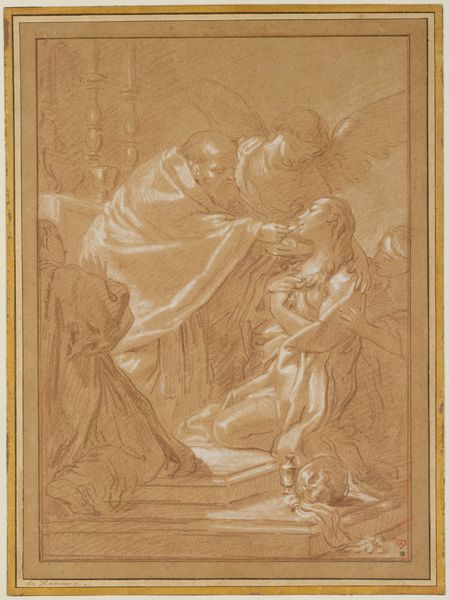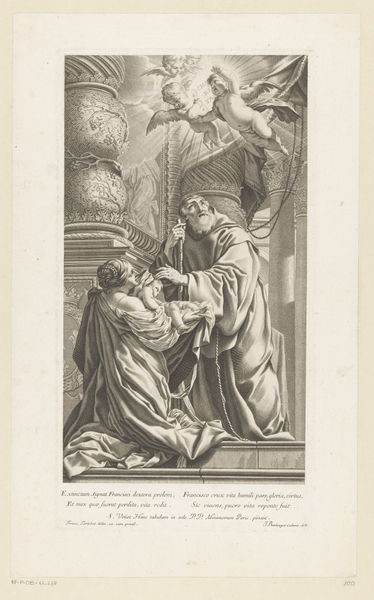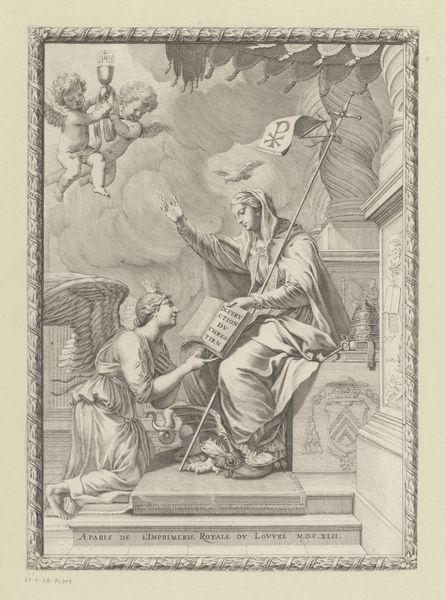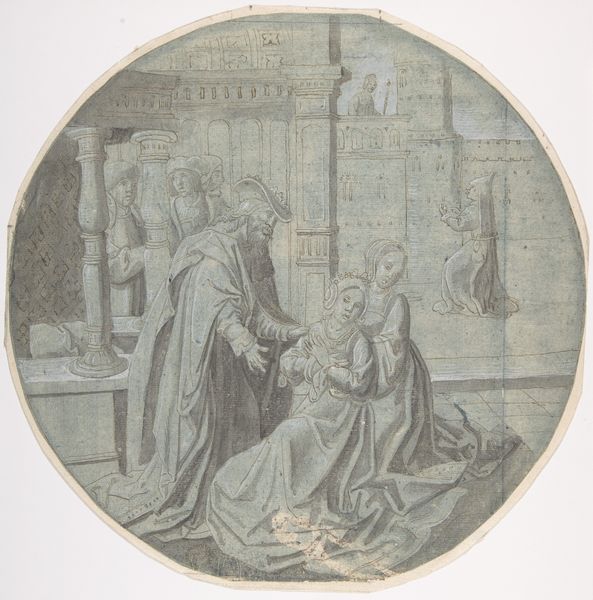
drawing, ink
#
drawing
#
neoclacissism
#
allegory
#
classical-realism
#
ink
#
history-painting
Dimensions: 332 mm (height) x 240 mm (width) (bladmaal)
Editor: So, this ink drawing is "Allegorical Drawing" by Joseph Bergler II, created in 1809. The figures seem classical, and there's definitely a somber mood. What do you see in this piece from a historical perspective? Curator: I see the Neoclassical movement's profound engagement with antiquity. Bergler uses allegory to discuss ideas relating to heroism and civic virtue, drawing upon earlier allegorical traditions found across Europe in the 17th and 18th centuries. The artistic and cultural institutions of the day greatly valued subjects tied to civic ideals. Where do you see this playing out in the image itself? Editor: Well, I suppose the laurel wreaths might indicate that! Also the architecture looks Roman, like a stage set perhaps, but why include musical instruments? Curator: Good observation. Now consider: In the early 19th century, academies shaped artistic taste, often dictating subject matter, and emphasizing art’s didactic role in promoting social cohesion. So what kind of stories could these musical instruments be used to tell, keeping in mind what kind of influence academic institutions held at this time? Editor: Maybe it's trying to say something about the role of music in society? That the arts more broadly promote shared values or ideals? Curator: Exactly. Bergler’s choice and depiction signal how artistic expressions intersect with—and help solidify—dominant societal values. Consider the formal style also, emphasizing line and clarity. It would have appealed to the academic tastes that legitimized an artist like Bergler. Editor: I hadn't really thought about it like that. I was focused on the classical look, but it’s fascinating to think about the social institutions surrounding the artist at this time! Curator: Indeed! It shows that the artistic choices made aren't just aesthetic but tied to power structures and broader cultural conversations.
Comments
No comments
Be the first to comment and join the conversation on the ultimate creative platform.
